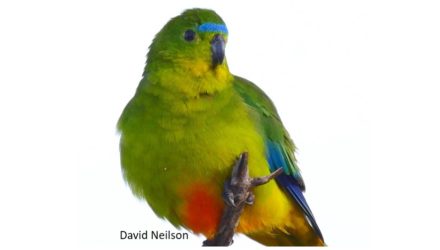We need to have a very serious talk about gender
Dr Craig Cormick
President, Australian Science Communicators
Rather than quote lots of facts and figures at you about the problems with portrayal of gender in science communications, I’m going to rely on the super powers of metaphor and talk about the super hero Black Widow. You know the character played by Scarlett Johansson in the Marvel movies.
Well, one of the best scenes in the movie Avengers: Age of Ultronis when the Avengers’ Quinjet swoops down low over the streets and Black Widow drops out of the bottom of the aircraft on her motorbike and hits the road and zooms off to fight evil.
Yeah! Kick-arse awesome!
Except when the toy companies Lego and Hasbro released their tie-in toys, suddenly it was Captain America who was dropping from the jet and riding the motorbike. What the..?
The companies copped quite a serve in the media and online for replacing a female action figure with a male one, and their excuse was that female action figures don’t sell as well as male ones. Which is a pretty lame excuse really – because how do you make change if you are not part of the change?
I really think Black Widow needs to knock on their door and say, “We need to have a very serious talk!”
Or take the European Union’s clumsy attempt to make a video promoting more women to take up careers in science with their ‘Science: it’s a girl thing’ video, that put more emphasis on cosmetics and fashion than science. It generated such outrage it was gone in a few days.
There is data as well as anecdotes. A number of studies have found evidence for significant bias against female scientists. Compared with their male counterparts, they:
- Receive grants less often and receive smaller grant allocations.[1]
- Receive fewer citations.[2]
- Receive fewer scientific awards.[3]
- Are less likely to get promoted.
- Are less likely to present their research at conferences.
- Are less likely to publish their work or collaborate internationally.
- Are under-represented among inventors.
- Are less likely to hold academic leadership positions.
- Receive faculty recommendation letters that are less praiseworthy.[4]
It has even been stated that taken together, the data suggest a pervasive culture of negative bias — whether conscious or unconscious — against women in academia.[5]
So the ethics of gender are something you need to continually consider. The same as race and disability and other forms of diversity.
Ask yourself if you have really tried to get balance in representation in stories and activities you are doing. Here is a bit of a check list:
- Do you have quotes from both men and women that are equal in the worth of the quote, and from equality in work roles?
- Are you supporting gender stereotypes or helping to break them down?
- Are you using gender-fair language, such as avoiding ‘he’ as a generic pronoun and worlds like chairman, businessman, mailman etc.[6]
- Do your images promote equality of roles?
- Do you have a mission statement on gender equity and diversity to refer to?
After all, how do we ever get change if you are not going to be a part of the change?
Because if not, you should know the day is definitely going to come when Black Widow knocks on your door and says, “We need to have a very serious talk about gender!”
References
[1]Bornmann, L., Mutz, R., & Daniel, H. D. (2007). Gender differences in grant peer review: A meta-analysis. Journal of Infometrics, 1
[2]Knobloch-Westerwick, S., & Glynn, C. J. (2013). The Matilda effect –Role congruity effects on scholarly communication: A citation analysis of Communication Research and Journal of Communication articles. Communication Research, 40(1).
[3]Lincoln, A. E., Pincus, S., Koster, J. B., & Leboy, P. S. (2012). The Matilda effect in science: Awards and prizes in the US, 1990s and 2000s. Social Studies of Science, 42.
[4]Trix, F., & Psenka, C. (2003). Exploring the color of glass: Letters of recommendation for female and male medical faculty. Discourse & Society, 14.
[5]Ledin, A., Bornmann, L., Gannon, F., & Wallon, G. A. (2007). A persistent problem: Traditional gender roles hold back female scientists. EMBO Reports, 8.
[6]Ramšak, A. (2014) Guidelines for Gender Sensitive Reporting, Ministry of Foreign Affairs, Republic of Slovenia.

